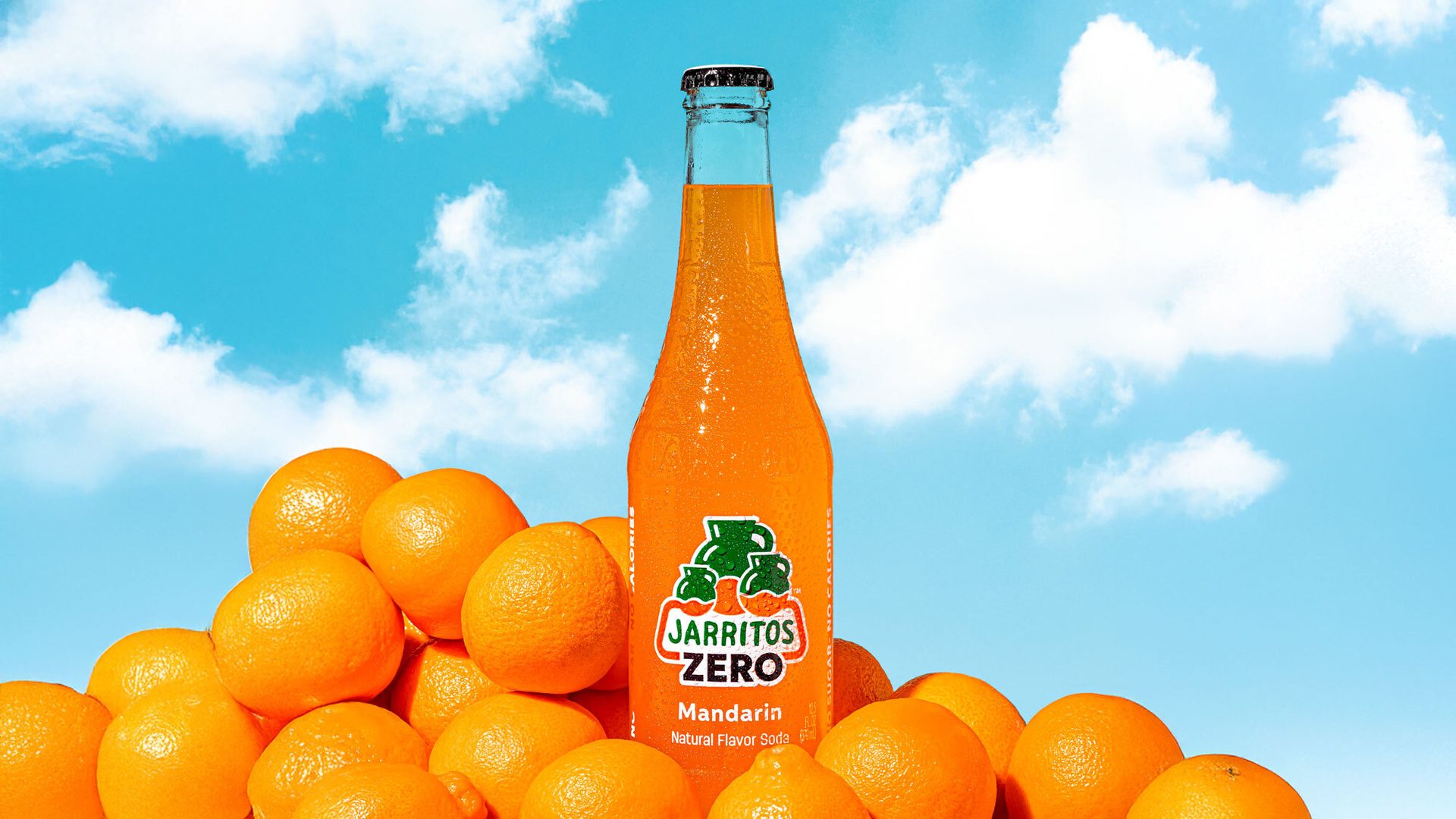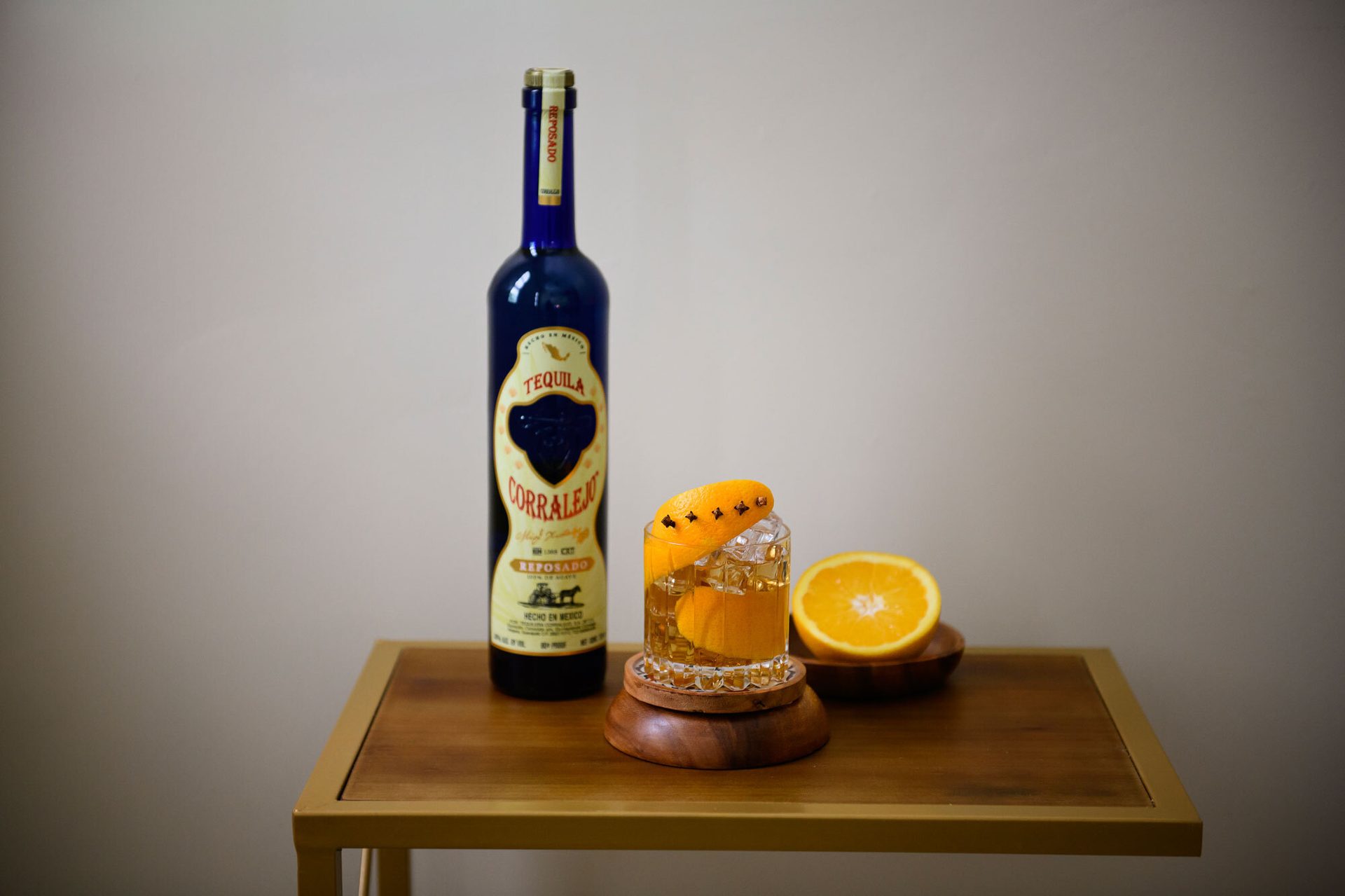Special Report
Bridging authenticity with innovation
Beverage-makers utilize bold, fruit-forward flavors as a nod to Latin culture
By Chloe Alverson
(Image courtesy of Califia Farms)
In August, Los Angeles-based Califia Farms unveiled its seasonal lineup ahead of the holidays. Among its organic, holiday-inspired flavored creamers, Califia Farms also revealed a Horchata variety.
Califia’s Horchata features a blend of rice and almond milk with cinnamon. The brand noted that horchata recently ranked among the Top 25 flavor trends. This latest innovation from Califia emphasizes consumer interest in Latin- and Hispanic-inspired beverages.
Ilana Orlofsky, senior manager for customer experience at Niles, Ill.-based Imbibe, considers Hispanic and Latin influence to be a “durable growth engine” and not a niche.
She shares that Hispanic shoppers accounted for nearly 16% of total United States consumer packaged goods (CPG) growth and represent outsized buying power, with a young age skew that compounds lifetime value.
This means that flavors and formats from Mexico, Central and South America are structurally advantaged for the next decade, Orlofsky states, citing Circana data from 2024.
“In beverages specifically, two signals stand out: the rapid mainstreaming of aguas frescas (from multinational launches to entrepreneurial brands) and momentum in agave/LatAm-adjacent BevAl and spirit-based RTDs [ready-to-drink] (paloma, ranch water) as the ‘fourth category’ (after wine, beer, spirits) matures,” she says. “These shifts reflect both taste preference and premiumization, not just novelty.”
Mitch Madoff, head of retail partnerships at Keychain, New York, describes how consumer appetite for Latin-inspired beverages is growing, with brands like Jarritos and Topo Chico moving from niche audience segments to staples on mainstream shelves.
“Classic juices like mango and pineapple remain steady performers, while sparkling water, sodas and agua frescas with tropical twists are exploding among consumers,” he says. “At the same time, horchata and micheladas are emerging as trendsetters, tapping into both cultural authenticity and the rising demand for indulgent, flavorful experiences that stand out from standard offerings.”

Jarritos Mandarin Zero is the brand’s first zero-calories soda that recently launched nationwide.
(Image courtesy of Jarritos/Novamex)
Flavor formulations
Certain Hispanic-inspired flavor profiles in beverages have been on the rise. Experts share why certain flavors are more popular than others.
Imbibe’s Orlofsky states that bold, dynamic flavors from Latin America are surging. Notably, she lists tamarindo (tangy, sweet-sour), mango con chamoy (juicy, spicy, sweet), pineapple, guava, prickly pear and specialty botanicals like yerba maté and guayusa.
“There’s a pronounced rise in ‘swicy’ (sweet-spicy) and tart flavor profiles — mango-chamoy, tepache (fermented pineapple) and even savory profiles like birria and mole in non-traditional beverage applications,” Orlofsky says.
She has observed a broad adoption of flavors such as hibiscus/Jamaica, tamarind, mango-chile or chamoy, limón/lime, horchata, guava, passion fruit and prickly pear.
“These win because they deliver bold, sessionable refreshment (think tart, salty, spicy, bright), naturally align with better-for-you (BFY) narratives (botanical, fruit-forward, vibrant color) and map seamlessly to socially viral formats like mangonadas and chamoy/Tajín culture.”
Orlofsky says that hibiscus alone is up nearly 30% on U.S. menus during the past four years, while prickly pear and horchata continue to show up more in quick-service restaurants.
“From our own lab, lime is leading the pack as one of the most Latine requested flavors this year, with pineapple, mango, coconut, chili, hibiscus and even jalapeño close behind,” she notes. “Tamarind and guava get fewer requests, but they’re still very much part of the conversation.”
Keychain’s Madoff states that guava, mango and peach flavors are gaining traction, while innovative flavor blends also are drawing new fans. He uses the example of Topo Chico’s lime with mint and blueberry hibiscus extensions to show how brands are layering on complexity to keep consumers engaged.
“These flavors resonate because they feel authentic, refreshing and distinct from traditional U.S. flavor sets,” Madoff says. “Retailers tell us they’re looking for products that stand out on shelf, and these profiles deliver that point of difference.”
In honor of Hispanic Heritage Month, Sept. 15 through Oct. 15, tequila brand Tequila Corralejo unveiled a cocktail to celebrate Mexico’s past and present. The Cocoa Old Fashioned features ingredients that pay tribute to the authentic flavors of Mexico and capture its heritage in every sip, the brand shares.
“We brought together some of our favorite Mexican flavors — rich mole, smoky chipotle and bright citrus — to complement Corralejo Reposado’s vanilla and oak notes for a cocktail that’s bold and complex, just like our roots,” said Nicole Arnell, senior brand manager of Tequila Corralejo at Infinium Spirits, in a statement. “This month is about celebrating the vibrant, evolving spirit of Mexico, and I think we’ve captured that right here in a glass.”
Imbibe’s Orlofsky explains that Hispanic and Latin-sourced flavors are showing up across a wide range of beverage formats right now.
“On the non-alc refreshment side, aguas frescas have moved from niche to mainstream. … In RTD cocktails, palomas, ranch waters and other agave-based builds are leading the mixology-to-can movement, and we’re even seeing NA paloma variants follow close behind,” she notes.
Coffee and café drinks also are a hot spot, she explains, with horchata-inspired lattes and shaken espressos proving to be seasonal winners that spike every summer. In the fermented beverage space, Orlofsky says tepache is being reintroduced to U.S. consumers as a “modern Mexican soda” that has expanded beyond just natural channels.
Keychain’s Madoff again points to Topo Chico, with its flavored extensions leading the charge of sparkling water, which has been a standout format for utilizing Hispanic and Latin-sourced flavor profiles.
“RTD versions of classic Latin-inspired beverages are growing popular as well,” he says. “Aguas frescas are booming, both in spiked versions like Modelo’s and in better-for-you entrants like Bawi and easy-to-grab horchatas like Kern’s Horchata Flavored Milk And Rice Drink are also on the rise.”

Tequila Corralejo’s Cocoa Old Fashioned pays tribute to the authentic flavors of Mexico, it says.
(Image courtesy of Tequila Corralejo)
Tropical nectars from Jumex remain reliable performers, Madoff notes, while coconut water brands like Vita Coco are beginning to lean into pineapple and/or peach mango tropical blends.
“This range shows the versatility of Latin flavors across both indulgent and wellness-driven formats,” he says.
In a March 2024 report titled “Hispanic consumers & non-alcoholic beverages – U.S.,” Fiona O’Donnell, a senior director at Mintel, highlights how the growing Hispanic audience has affected revenue across the beverage industry.
The report notes that Hispanics are avid non-alcohol beverage consumers, citing that 71% drink coffee or coffee drinks daily, while nearly half drink CSDs and juice/juice drinks often.
“When asked what factors drive purchases, Hispanics are typically most likely to cite flavor, with more than half doing so for coffee/coffee drinks, sports/energy/performance drinks and juice/juice drinks,” the report states.
Beverage brands are taking advantage of consumer interest in Latin and Hispanic beverage formulations.
Imbibe’s Orlofsky shares that beverage-makers are leaning into Latin-inspired flavors with a mix of strategies designed to drive excitement and build trust.
“Limited-edition and seasonal drops — like Starbuck’s horchata latte or Minute Maid Aguas Frescas scaling aguas frescas to mass retail — create urgency and broaden consumer exposure,” she explains. “Premium ingredients are also being highlighted, with brands emphasizing ethically sourced botanicals like hibiscus, agave and prickly pear and pairing them with transparent origin storytelling. Authenticity is often reinforced through partnerships, as we’ve seen with Jarritos x Salud’s hydration mixes or smaller craft brands collaborating with Latin-owned food businesses to co-create products.”
Bold packaging and smaller formats are being used to position these drinks as affordable luxuries, Orlofsky adds, which is a space where brands like CELSIUS, with its tropical flavor drops, and OLIPOP, with guava-inspired designs, are especially resonant.
“The response has been twofold: leaning into authenticity and doubling down on innovation,” Keychain’s Madoff says. “Jarritos continues to deliver on traditional flavors, while Topo Chico is reimaging sparkling water with bold flavor extensions.”
Newer brands like Bawi are carving out a new space by pairing aguas frescas with consumers’ trend toward better-for-you (BFY) options, he adds.
“Across the board, producers are modernizing with cleaner ingredient decks, lower sugar content and packaging that feels premium,” Madoff explains. “For us at Keychain, it’s been exciting to see both emerging startups and established brands use the platform to source the right ingredients and packaging partners to move quickly with these launches.”
Recently, Jarritos launched its Jarritos Mandarin Zero flavor nationwide. The zero-calorie format underscores Jarritos’ commitment to evolving with consumer preferences while maintaining the brand’s hallmark fruit-forward authenticity, it says.
“Fans have asked for a Jarritos option that fits zero-calorie lifestyles without losing the real fruit taste they love,” Eric Delamare, director of marketing at Novamex, said in a statement. “Mandarin Zero is a true breakthrough, delivering the same authentic flavor of our No. 1 seller, in a zero-calorie recipe consumers couldn’t tell apart from the original.”
“Across the board, producers are modernizing with cleaner ingredient decks, lower sugar content and packaging that feels premium, while keeping cultural storytelling at the center.”
– Mitch Madoff, head of retail partnerships at Keychain
Benefiting from beverage trends
As brands embrace Hispanic and Latin influences, opportunities are emerging for beverage innovation.
Keychain’s Madoff suggests that the biggest opportunities lie in crossover formats that marry tradition with today’s consumer priorities.
“Think functional sparkling aguas frescas, probiotic takes on tepache or non-alcoholic cocktails built on tropical, Latin-inspired bases,” he describes. “Retailers also have room to grow with private label offerings, bringing authentic flavors like guava and hibiscus to the value tier. Seasonal and limited-time drops tied to cultural celebrations could also create new reasons for trial and repeat purchases.”
In a December 2024 report from Chicago-based Circana titled “Retail and brand strategies for reaching Hispanic food and beverage shoppers,” Sally Lyons Wyatt, global executive vice president and chief advisor of consumer goods and foodservice insights, and Kellie Hardin, client insights consultant at Circana, detail how brands can appeal to Hispanic consumers.
“Co-branding partnerships or entering adjacencies and licensing deals are great ways for Hispanic brands and brands in general to drive growth, expand brand equity and attract new partners,” the report states. “If a brand doesn’t have attributes that align with Hispanic needs, it should consider mergers and acquisitions to find its way into homes.”
The report notes that Hispanic consumers are drawn to products promoted as natural, organic and BFY, and that they seek out flavors like horchata, melon, mango and limón.
There also could be challenges for Latin-inspired beverages. Experts note what those challenges might look like.
Authenticity is the biggest hurdle, according to Imbibe’s Orlofsky.
“Consumers are quick to call out ‘flavor-washing,’ so the brands that succeed are the ones working closely with Latine founders, communities and suppliers — and sharing those stories in a transparent, credible way,” she shares. “At the same time, there are real formulation and sourcing challenges.”
Ingredients like hibiscus or tamarind aren’t always easy to secure consistently, Orlofsky states, and traditional profiles often need to be adapted for today’s nutrition expectations.
“That’s where partners like Imbibe come in — whether it’s helping source reliable ingredients, creating alternates that protect flavor integrity or using spice, acid and botanicals to deliver an authentic experience with a modern nutritional profile,” Orlofsky says.
Not every flavor grows equally, Keychain’s Madoff states.
“Consumers are gravitating toward guava and mango, while classics like tamarind are seeing slower turns,” he says. “Sourcing real ingredients consumers are looking for, like hibiscus or tropical fruits, can also put pressure on margins, especially at scale.”
As Imbibe’s Orlofksy noted, it is evident that Latin- and Hispanic-influenced beverages are no longer a niche, but an established segment within the industry.